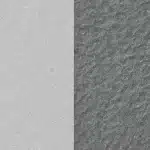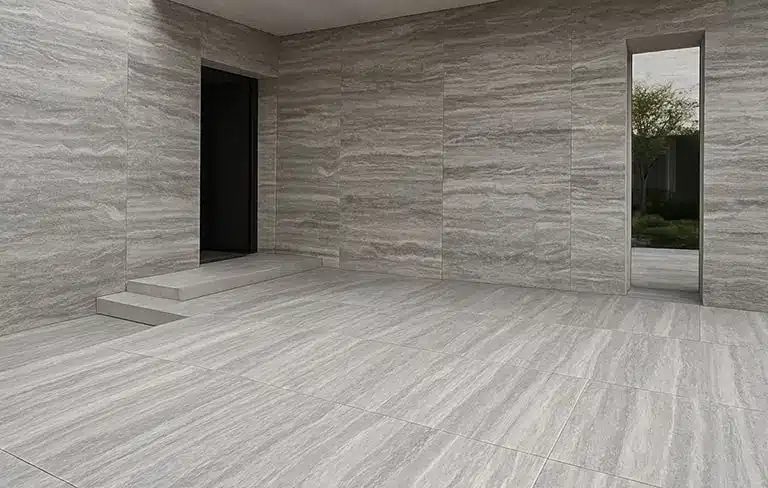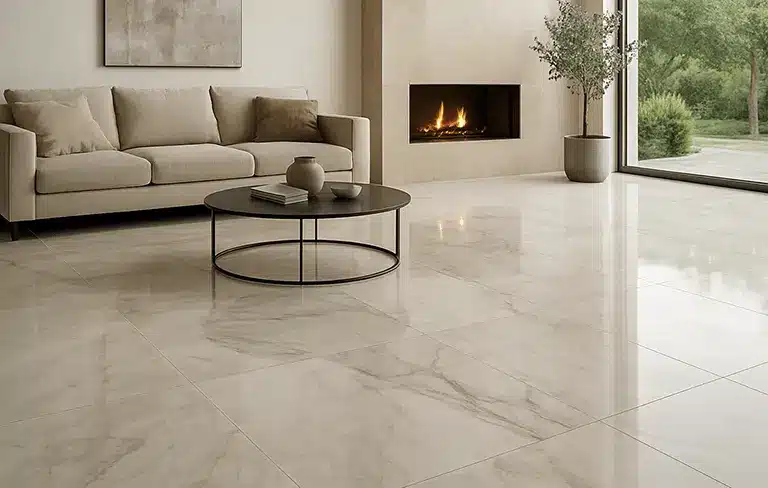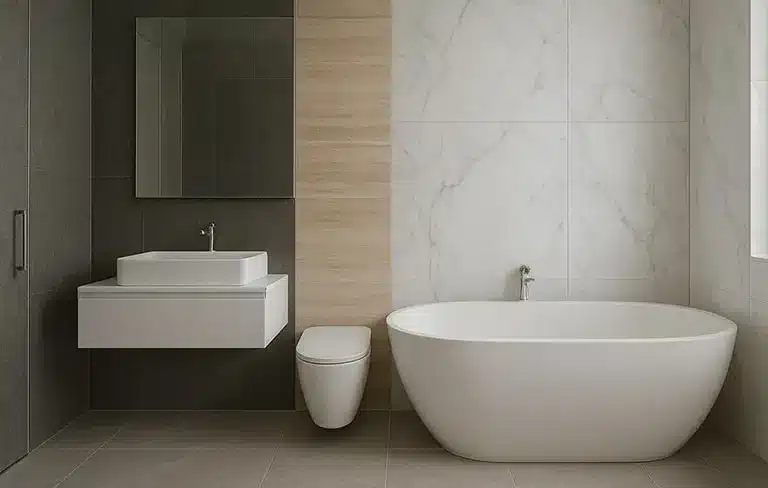
The Difference Between Polished and Leathered Stone: Which Is Best for Your Project?
2025-04-15
Types of Stones for Terraces and Balconies
2025-06-16Advantages and Disadvantages of Travertine Stone: A Smart Choice or a Design Challenge?
Building stones have always been an integral part of Iranian and global architecture. Among the most widely used and popular types is travertine stone. This natural stone, with its unique appearance, diverse color range, and versatile applications, is a highly attractive option for architects, interior designers, and builders. But is travertine always the best choice? In this article, we thoroughly examine the advantages and disadvantages of travertine stone to help you make a more informed decision.
What is Travertine Stone?
Travertine is a type of limestone formed by the deposition of mineral springs, especially hot springs. In Iran, travertine is primarily quarried from regions like Mahallat, Hajiabad, and Abbasabad, making it one of the country’s major stone exports. The porous and layered structure of travertine gives it distinct physical properties, bringing both benefits and drawbacks.
Advantages of Travertine Stone
-
Aesthetic Appeal and Color Variety
One of the most important features of travertine is its wide range of colors. From light shades like white, cream, and beige to darker tones such as chocolate brown and walnut, this variety allows designers to match different tastes and create visually stunning results.
-
Smooth Surface and High Polishability
Travertine can be easily polished to achieve a glossy, smooth surface. This makes it ideal for use in façades, flooring, staircases, and interior walls.
-
Strong Adhesion to Mortar
The porous structure of travertine gives it excellent adhesion to mortar, which is a significant advantage, especially when installing on building façades.
-
Resistance to Weather Conditions
Travertine is highly resistant to extreme weather changes, including cold, heat, rain, and sunlight. This makes it a popular choice for exterior applications.
-
Easy Processing
Compared to harder stones like granite, travertine is easier to cut and process into various sizes and forms, reducing fabrication costs and speeding up installation.
-
Natural Thermal and Sound Insulation
The pores within travertine naturally provide thermal and sound insulation, making it especially valuable in hot or noisy environments.
Disadvantages of Travertine Stone
-
Porosity and Water Absorption
While porosity improves adhesion, it also means that travertine can absorb water and moisture. If not properly sealed, it may develop efflorescence, staining, or cracks over time.
-
Higher Maintenance Requirements
Compared to other stones, travertine requires more frequent maintenance. Proper sealing, use of specialized cleaners, and periodic resealing are necessary to maintain its beauty and durability.
-
Sensitivity to Acids
Travertine is highly sensitive to acidic substances like vinegar, lemon juice, or acidic cleaners. Contact with such materials can cause surface etching and permanent stains, requiring extra caution, especially in kitchens or bathrooms.
-
Relatively High Cost
Although travertine is less expensive than marble, it is still considered a relatively costly option, particularly for premium quality or imported varieties.
-
Relative Fragility
Due to its layered and porous structure, travertine is more susceptible to cracking under heavy impact compared to harder stones like granite. Thus, extra care is needed in high-traffic areas.
Is Travertine the Right Choice for Your Project?
The answer depends on your project type, usage area, budget, and personal taste. If you’re looking for a beautiful, classic stone that is easy to install and offers natural insulation, travertine could be an excellent option. However, if you need extremely high durability with minimal maintenance or are dealing with highly humid environments, alternatives like granite or porcelain tiles might be better suited.
Tips for Better Use of Travertine
- Professional Sealing and Grouting: To prevent water and dirt infiltration.
- Proper Installation by Experts: Especially important for high-rise façades.
- Choosing Appropriate Usage Areas: Ideal for exteriors, dry interiors, and flooring.
- Cleaning with Non-Acidic Products: To preserve the stone’s longevity and beauty.
Conclusion
With its unique visual appeal and reliable performance under different climate conditions, travertine remains one of the most popular building stones in Iran and around the world. However, being aware of its disadvantages and choosing the right application and maintenance strategy play a crucial role in maximizing its lifespan and functionality. Therefore, selecting travertine should be based on a full understanding of both your project needs and the stone’s technical characteristics.





1 Comment
You’ve woven a tapestry of insight and grace; each sentence is a thread of beauty and meaning.